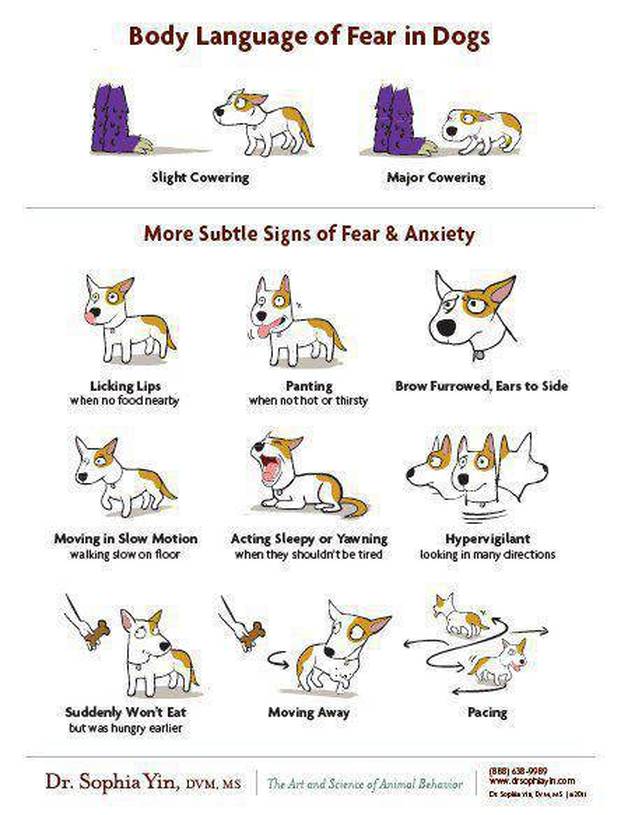Understanding Dog Body Language
Adapted from "Mother Knows Best" by Carol Benjamin
To understand your dog, you must understand what your dog is saying to you. Since dogs cannot talk, they must communicate with each other in some other manner. Over time canines have developed a method of communicating by body signals to express their feelings. The ability to read and understand this type of language will enrich your relationship with your dog. Here are a few examples of body language to help you learn what your dog is trying to tell you.
Play Bow: When stretching after a nap or expressing friendly sociability, the dog will assume an elongated position with his forelegs and chest on the ground and rump in the air. This stretched position is one of the chief ways in which your dog invites play. Almost all dogs use and can read this posture, even if it is done awkwardly by a human. (FYI: If your pet is acting ill and he positions himself this way but with tail down- this posture is called the "prayer position" and can indicate belly pain).
Pawing: Pawing is a submissive, friendly gesture, also used as an invitation to communicate or play. Paw back and while you are there, tell him to "Shake" and you've got an instant trick.
Panting: Your dog pants both to cool his body (because he does not sweat through his skin as people do, but rather via his tongue and paw pads) and to express friendliness. If you pant back to him, he will either respond in kind or he will translate (...he will either pant back or he will play bow, paw at you, or wag his tail).
Mobbing: Mobbing and subsequent mouth licking are most often seen in puppies when their mother approaches. Your puppy may mob you when you come home, and for similar reasons. In the wild, and sometimes even in a domestic setting, when mother is mobbed and her lips are licked, she regurgitates her half-digested meal for her babies. You, on the other hand, will probably prefer to pet him when he mobs you.
Submissive Posturing: Submissive posturing begins with the ears folded back, tail tucked between the hind legs, a roll over onto the back, neck and tummy exposed, tip of the tail wagging and perhaps urination. This is language you should understand since you will be training and correcting your dog. This is not a language you should "speak" as it is not appropriate for humans.
Tail Wagging: Tail wagging is an indication of friendliness. If wagged low, it is an indication of submission. When only the tip of the tail wags, your dog is not sure if you will be happy about what he is doing- but he sure hopes so.
Hackles Raised: Raised hackles mean anger. If you see a dog with everything going out and forward- hackles raised, ears forward, tail high, up on his toes- that is an angry dog. Fear is expressed by a pulling in - ears back, tail tucked, rounded back, and tummy tucked. Mixed messages- ears back, hackles up, could mean a shy, sharp dog or a fear biter. This dog, the one expressing ambivalence, is less predictable and can be more dangerous than an aggressive dog.
Tail Tucking: Submission and fear are expressed with a tucked tail. The female will also tuck her tail to protect herself from amorous males when she is not in season. When ready to mate, an intact female will flag her tail, tossing it high and to the side.
The "T" Position: The more dominate of two dogs will form a "T" by leaning on the submissive dog's back with its muzzle or even its paws.
Laugh Face: An open-mouth happy look is an invitation to play.
Mounting: Mounting is used for mating and also as a display of dominance. A dog wishing to vote himself alpha dog will mount another dog of either sex as an act of self-assertion. There is no appropriate reason for a dog to be allowed to mount a human. Be aware that young puppies (less than 6 months old) will sometimes mount in play- there is no sexual context at this age (the pup has not reached puberty yet).
Submissive Grin: This "caught-in-the-act" type of grin acknowledges submission.


